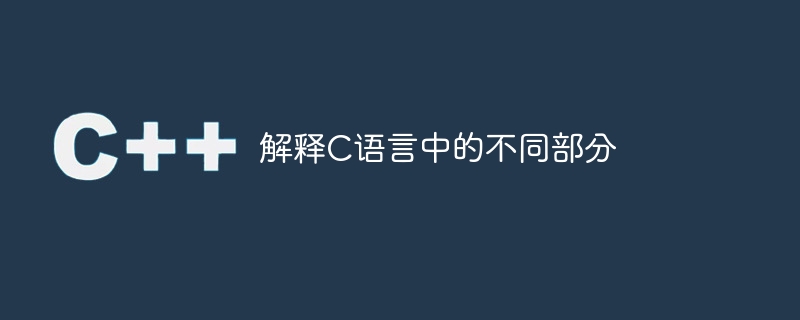解释C语言中的不同部分
- PHPz转载
- 2023-08-26 19:09:06973浏览

C程序是由一组协议定义的,程序员在编写代码时必须遵循这些协议。
部分
完整的程序被划分为不同的部分,如下所示:
文档部分 - 在这里,我们可以给出有关程序的命令,如作者姓名、创建或修改日期。在/* */或//之间编写的信息被称为注释行。这些行在执行时不被编译器考虑。
链接部分 - 在这个部分,包含了执行程序所需的头文件。
定义部分 - 在这里,定义和初始化变量。
全局声明部分 - 在这个部分,定义了可以在整个程序中使用的全局变量。
函数原型声明部分 - 这个部分提供了函数的返回类型、参数和函数内部使用的名称等信息。
主函数 - C程序将从这个部分开始编译。通常,它有两个主要部分,称为声明部分和可执行部分。
用户定义部分 - 用户可以定义自己的函数,并根据用户的需求执行特定的任务。
'C'程序的一般形式
C程序的一般形式如下:
/* documentation section */
preprocessor directives
global declaration
main ( ){
local declaration
executable statements
}
returntype function name (argument list){
local declaration
executable statements
}示例
以下是使用带参数但没有返回值的函数执行加法的C程序−
在线演示
#include<stdio.h>
void main(){
//Function declaration - (function has void because we are not returning any values for function)//
void sum(int,int);
//Declaring actual parameters//
int a,b;
//Reading User I/p//
printf("Enter a,b :");
scanf("%d,%d",&a,&b);
//Function calling//
sum(a,b);
}
void sum(int a, int b){//Declaring formal parameters
//Declaring variables//
int add;
//Addition operation//
add=a+b;
//Printing O/p//
printf("Addition of a and b is %d",add);
}输出
你将会看到以下输出 −
Enter a,b :5,6 Addition of a and b is 11
以上是解释C语言中的不同部分的详细内容。更多信息请关注PHP中文网其他相关文章!
声明:
本文转载于:tutorialspoint.com。如有侵权,请联系admin@php.cn删除

